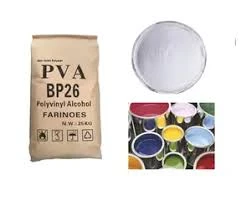Exploring the Versatility of Cellulose Ethers Focus on HPMC
In the realm of polymer chemistry, cellulose ethers stand out as a critical component in various industrial applications, thanks to their unique properties and adaptability. Among them, Hydroxypropyl Methylcellulose (HPMC) boasts a versatile profile that makes it a popular choice in several fields including pharmaceuticals, construction, food, and personal care.
Understanding HPMC
HPMC is a semi-synthetic polymer derived from natural cellulose, which is processed to replace some of the hydroxyl groups with hydroxypropyl and methyl groups. This modification results in a product that is soluble in water, forming a viscous solution. The solubility and viscosity can be manipulated by altering the degree of substitution, which allows manufacturers to tailor HPMC for specific applications.
Applications of HPMC
1. Pharmaceutical Industry HPMC is extensively used as an excipient in the formulation of tablets, capsules, and suspensions. Its ability to form gels aids in controlled drug release, improving bioavailability and enhancing therapeutic efficacy. Additionally, HPMC serves as a coating agent, offering protective barriers against moisture and light which can degrade active pharmaceutical ingredients.
2. Construction Sector In construction, HPMC is a key ingredient in cement-based products such as tile adhesives, plaster, and joint compounds. Its water-retention properties help maintain moisture in mortars, allowing for better workability and adhesion. Moreover, HPMC contributes to the rheological properties of these materials, ensuring a smoother application and enhanced performance.
3. Food Industry HPMC's stability and thickening properties make it a valuable additive in the food sector. It is utilized in the formulation of sauces, dressings, and low-fat products, where it helps maintain texture and consistency. Additionally, its emulsifying properties assist in stabilizing oil and water phases in food products.
cellulos ether hpmc

4. Personal Care In personal care products, HPMC is frequently found in cosmetics, lotions, and creams. Its ability to form films provides a smooth application and enhances the aesthetic feel of the product on the skin. Furthermore, HPMC serves as a thickener and stabilizer in hair care formulations, offering improved texture and performance.
Benefits of HPMC
HPMC offers numerous benefits that set it apart from other additives. Its non-toxic nature makes it suitable for food and pharmaceutical applications, ensuring consumer safety. The versatility in its physical and chemical properties allows it to be utilized across a wide range of pH levels and temperatures, making it adaptable to various formulations.
Moreover, HPMC is biodegradable and derived from renewable sources, aligning with the growing demand for sustainable and environmentally friendly products. As industries seek to minimize their ecological footprint, cellulose ethers like HPMC stand out as viable solutions.
Conclusion
The versatility and applicability of Hydroxypropyl Methylcellulose make it an invaluable asset across multiple sectors. Its unique properties enable innovations in drug delivery, construction materials, food stabilization, and personal care formulation. As research continues to explore new modifications and applications, HPMC and other cellulose ethers are poised to play a significant role in advancing product performance and sustainability. Embracing these materials not only caters to market demands but also contributes to a more sustainable future. Whether it is enhancing the effectiveness of pharmaceuticals or improving the quality of everyday products, HPMC embodies the potential of cellulose derivatives in modern industrial applications.
In conclusion, HPMC is a shining example of how a natural polymer can be transformed to create diverse solutions that meet the complex needs of today’s industries. Its continuing evolution promises exciting prospects for innovation across various fields, ensuring its relevance for decades to come.
-
HEC 100000 Hydroxyethylcellulose for Paint | Superior ThickeningNewsAug.30,2025
-
Wall Putty Rdp Powder Packaging DesignNewsAug.29,2025
-
Introduction to Hpmc Hydroxypropyl Methyl CellulosNewsAug.29,2025
-
Hpmc Industri Grade IntegrationNewsAug.29,2025
-
How to Choose the Right Construction AdhesiveNewsAug.29,2025
-
Construction Adhesive StrengthNewsAug.29,2025




